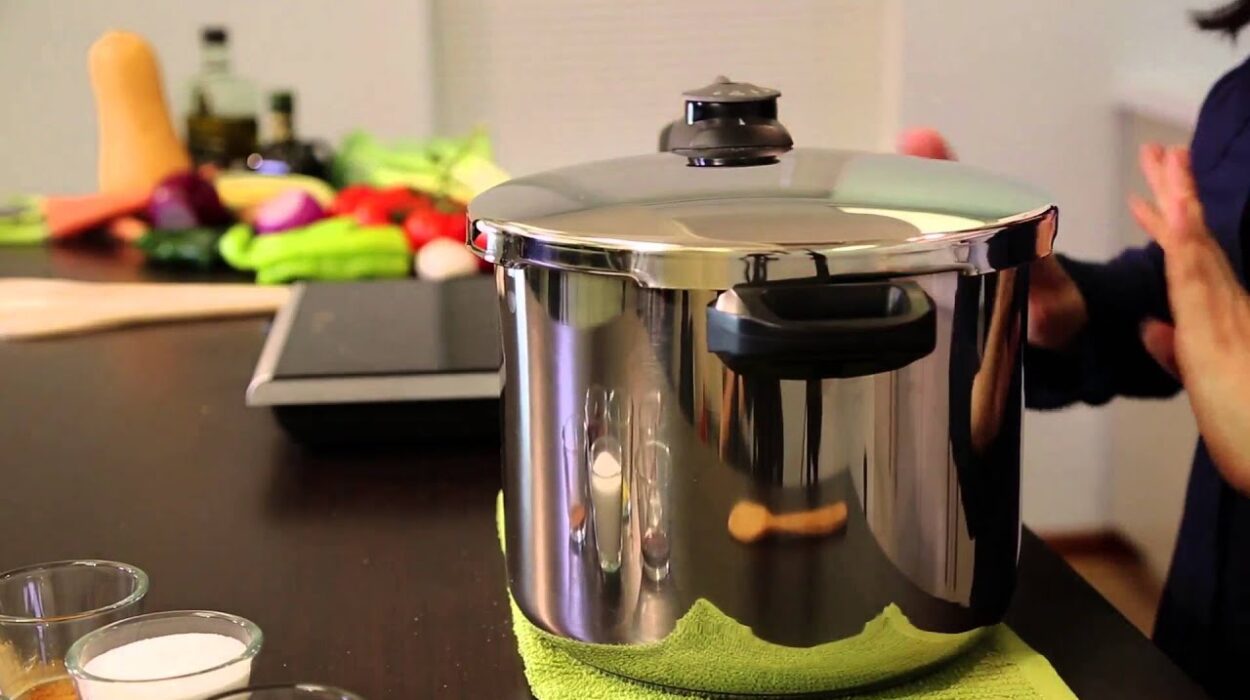If you’re looking for a fast, convenient, and delicious way to prepare soup, learning how to cook soup in a pressure cooker is your best path to culinary success. The pressure cooker, a staple in many kitchens around the world, significantly decreases cooking time while intensifying flavors, making it an indispensable tool for home cooks and food enthusiasts alike. In this detailed guide, we’ll walk you through each step of creating a mouth-watering soup using a pressure cooker, while providing you with valuable tips and insights on how to get the most out of this versatile appliance.

Why Use a Pressure Cooker for Soup?
The question often arises, ‘Why use a pressure cooker for soup?’ The simple answer lies in the efficiency and effectiveness of this marvelous piece of cookware. A pressure cooker utilizes steam pressure to cook food faster than traditional methods. This not only reduces the time you spend in the kitchen but also enhances the infusion of flavors, leading to a richer, more robust tasting dish. Moreover, the high pressure and heat help to tenderize meats and break down vegetable fibers, resulting in delectably smooth soups that require minimal preparation time. By sealing the pressure cooker, nutrients are preserved, making your meals not just faster and tastier but also healthier.
Essential Pressure Cooker Basics
Before diving into cooking soup in a pressure cooker, it’s important to familiarize yourself with the basics of this tool. Whether you’re using a classic stove-top version or a modern electric model, understanding the functionality of your pressure cooker will enhance your cooking experience. Take time to read the manual and become acclimated with the settings and safety features of your particular model. Many electric pressure cookers like the Instant Pot or the Cosori offer various settings for soup, rice, meat, and more.
To ensure you’re equipped with the right accessories, you might consider having a reliable knife, cutting board, and perhaps even a quality cookware cleaner. Maintaining your equipment prolongs its usability and keeps your cooking environment safe and hygienic.
Choosing the Right Ingredients
The quality of ingredients you choose can make or break your soup. Fresh, premium vegetables, proteins, and broths create the foundation of a delicious dish. When possible, select organic produce and ethically-sourced meats to ensure both taste and morality are upheld in your cooking. Consider seasonal ingredients that will provide optimal flavor. For example, root vegetables and squashes are excellent choices during the fall and winter months.
Preparing Your Ingredients
Preparation is key to a seamless cooking process. Use a sharp knife and a sturdy cutting board to efficiently chop your vegetables and proteins. This consistency ensures even cooking within the pressure cooker. For a professional touch, apply cutting board oil regularly to maintain its condition, preventing warping and ensuring clean cuts every time.
Step-by-Step Guide: Cooking Soup in a Pressure Cooker
1. Assemble Your Ingredients – First, gather all your prepped vegetables, meats, and seasonings. Common additions include carrots, onions, garlic, chicken, and herbs.
2. Saute Ingredients (If Necessary) – Many sophisticated pressure cookers offer a saut function that allows you to caramelize onions or brown proteins for an additional depth of flavor before pressurizing.
3. Add Liquid – Pour in your broth or stock. The liquid is necessary not just for the soup, but to create steam in the pressure cooker. A typical ratio is three parts liquid to one part solids, but this can be adjusted for desired thickness.
4. Seal and Set Cooker – Secure the pressure cooker lid and ensure the vent is in the sealed position. Set the cooker to the appropriate setting, usually ‘Soup/Stew’, and adjust the time as needed.
5. Pressure Cook – Allow the pressure cooker to do its magic. In about 20-30 minutes, your soup should be thoroughly cooked. The robust flavors and tender textures will showcase the efficiency of pressure cooking.
6. Release Pressure – At the end of cooking, you can either release the pressure quickly using the quick-release function or allow the cooker to cool down naturally for a few minutes.
7. Finish and Season – After opening the lid, give your soup a taste test. Adjust seasoning with salt, pepper, or herbs. For added creaminess, consider blending ingredients or adding some cream.
Final Touches and Serving Suggestions
Once the soup is prepared, taking time to present it aesthetically can enhance the overall dining experience. Ladle the soup into bowls and garnish with fresh herbs, a dollop of sour cream, or a sprinkle of cheese. Consider serving with freshly baked bread or a side salad for a more complete meal.
For those interested in exploring further applications for their pressure cookers, check out our articles on tamales and rice cooking techniques. These resources will provide you with more versatile and delicious ways to utilize your pressure cooker.

Cleaning and Maintenance
Subsequent to cooking, proper cleaning and maintenance of your pressure cooker are essential for longevity and performance. Always refer to your manual for cleaning instructions and avoid submerging electronic components. A product like cookware cleaner can aid in removing any stuck food residues, maintaining the cooker’s pristine condition. Regular maintenance will assure that your pressure cooker continues to function optimally, ready for your next culinary endeavor.
Incorporating these tips and techniques into your cooking routine can transform the way you prepare meals and broaden the scope of dishes you can create with ease. The pressure cooker is truly a remarkable device, capable of delivering exquisite flavors and textures that rival traditional cooking methods. So, open your kitchen to new possibilities and master the art of cooking soup in a pressure cooker today!
This article contains affiliate links. We may earn a commission at no extra cost to you.


